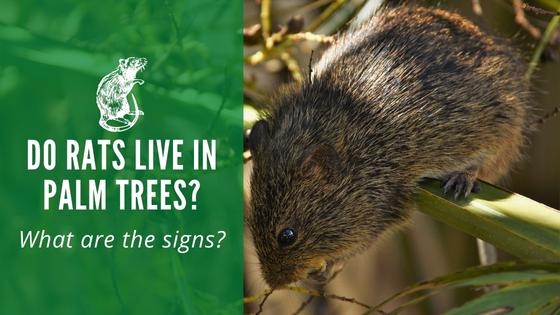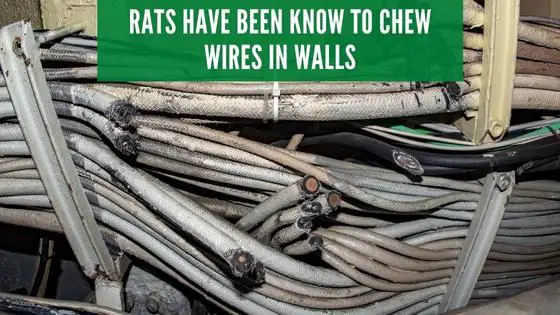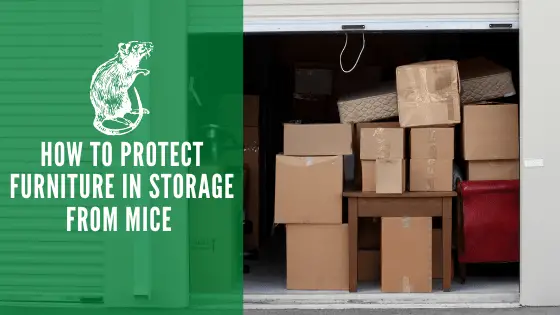Do Rats Live in Palm Trees?

The sight of beautiful palm trees swaying in the breeze gives your property’s landscaping a tropical vibe, and the last thing you might be thinking about is a rat lurking overhead. Yet, rats do live in palm trees, and knowing how to spot the signs of an infestation helps you keep them away from your home or commercial building.
Do Rats Build Nests In Palm Trees?
Rodents love the safety that nesting high up in a palm tree provides, and they spend about 90% of their life being more than four-feet above the ground. They’ll often climb the trunks and build their nests among the branches and leaves, where they’ll be safe from predators.
Palm rats may also burrow into hollowed-out parts of larger trunks, and you might even find some nesting in dead fronds on the ground. This is more common in areas with thick undergrowth on the ground or large amounts of debris that make hiding easier.
Are Palm Rats a Special Type of Rodent?
There is an actual palm rat called the Rattus Palmarum, but you likely won’t see this kind climbing the trees in your lawn. This type only lives on the Nicobar Islands, located near India, and they’re listed as vulnerable to endangerment.
Instead, the rats hanging out in your palm trees are likely to be old roof rats. This type of rat can get fairly large. Some can weigh up to 12 ounces and be as long as 16 inches from their snout to the tip of their extra long tail.
Because of their size, you’ll sometimes see them running from palm tree branches onto the roof of buildings, especially in the evening when they’re most active.
Will Palm Rats Go Into Buildings?
Rodents tend to have very few boundaries regarding breaking and entering. Palm rats are more likely to invade your home or commercial building when the branches from the tree are within three feet of the exterior walls or roof.
The nimble rodents can easily jump from the branches and onto the building, where they’ll then begin looking for an entry point. Common entry points for rodents are damaged areas on the roof, such as where missing shingles have allowed holes to develop in the wooden sublayer.
Despite how big they look from the ground, these rodents can compress their bodies to get through a hole the size of a half dollar. Essentially, if a hole exists anywhere on the exterior of the building, then it is quite possible that a palm rat could make its way inside.
What Kind of Palm Trees Do Rats Like?
The rats may not have many demands for where they’ll build their nest, but they tend to go for palm trees with thick trunks and dense foliage. The thick trunks make climbing and potentially building a nest in a hollowed-out space easier for them. The rats can also feel more secure that their nests won’t blow away in the breeze.

Rodents also tend to prefer palms that provide them with a steady supply of delicious fruits, and having an accessible food source near their nest is mighty convenient. These pests commonly invade date palms along with the ever-popular Queen palm, which can easily drop 100 pounds of fruit or more in one fell swoop.
You’ll also want to be aware that palms aren’t the only type of tree the eager eaters will invade. They’ll also hang out near citrus and other tree varieties where they can find food to feed themselves and their young. They typically prefer palms for nesting due to their size.
How Do You Know If You Have Palm Rats?
If you’re lucky, or unlucky as the case may be, you might see these animals running around in palm trees in the evening. They may be most noticeable at dusk as they prepare to leave their nest and go on their nocturnal wanderings.
You can also spot a few signs of rodent activity in palm trees, such as seeing gnawed branches or clear signs of an attempt to burrow in weakened parts of the trunk.
Once the rodents have a well-established nest, you can see well-worn paths in the grass that run from the trees to other parts of the landscaping or your house. If the rats travel across concrete, wood, and other surfaces where stains can show up, then you can sometimes see greasy smudges from the oils on the rats’ fur constantly rubbing off their bodies.
Those grease trails can contain scents that attract other rats by letting them know that others have found your property to be a safe haven.
Seeing an unusual amount of chewed-up fruit, discarded citrus rinds, and bark around the tree’s base is another sign that something is possibly living there.
If the animals make their way indoors, you’ll sometimes hear scratching sounds from inside the walls, the garage, or up in the attic.
Discovering droppings is another unmistakable sign of pest activity on your property.
What Problems Do Palm Rats Cause?
The list of issues that rodents on your property can cause seems neverending. Even when they’re outside, the rodents and their droppings expose you and others who visit your property to potential diseases.

Once they get inside, rats will chew their way through walls, and hitting an electrical wire can potentially start a fire. While chewing behaviors aren’t good, the real damage tends to come from the large amounts of urine and droppings that a large rodent population can generate in a short period.
How Do You Get Rid of Rats In a Palm Tree?
Rodent control gets tricky. Using DIY poisons can leave you with dead rats in areas that you can’t access, such as inside of the wall.
There’s also the possibility that children or pets could access the poison and get sick. Many states, such as Florida, even make it illegal to use baits that could be accessible to children, livestock, or other wildlife unless they are in tamper-proof stations.
On top of knowing safe methods for rodent removal, professional technicians take the eradication process one step further by recommending ways to keep the critters from coming inside. Exclusion methods such as placing guards around palm tree trunks and shoring up holes on the exterior of your house go a long way towards protecting your property from invasions.
Now that you know that rats nest in palm trees, you have a handy little fact to share with the next person who admires the beauty of those swaying leaves. You might also catch yourself staring up at the fronds with a curious eye if you notice the signs of a rodent invasion.
If you do suspect rats are living up there, then don’t worry. Whether you call them roof rats or palm rats, professional pest services can help you get the problem under control.
Other pests you can commonly find in palm trees include wasps, bees, scorpions, snakes, ants, and roaches.



